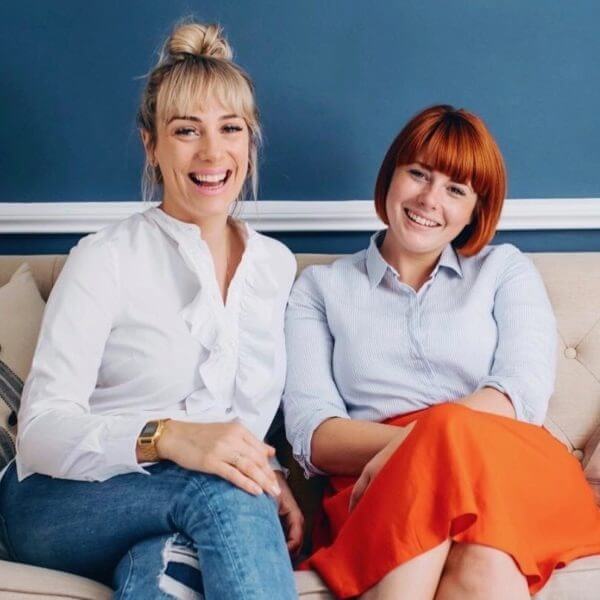7 Types of Journaling for Anxiety and Mental Wellbeing

Find the right type of journaling for you
Way back in July, when our Positive Planner Facebook Group was just getting started, we had journaling as our monthly discovery theme. We spent time discussing how, when and why we journal and someone asked what types of journaling are out there. This prompted us to do a week of posts detailing our top 7 types of journaling for anxiety and mental wellbeing and this blog post brings all these together.
We know the benefits of journaling are far-reaching. They range from the physical and organisational, to those more connected with our mental health and wellbeing. But if you’ve never journaled before, it can all seem a little daunting. Sitting in front of a blank sheet of paper with a pen might be completely new to you. Where do I start? How do I start? What on earth should I be writing about? Does this sound familiar?
How to get started
Well, first of all, if you are completely new to it, take a look at Ali’s How to Journal for your Wellbeing blog post here. This is a brilliant down-to-earth guide on all you need to get started. You also won’t be surprised that journaling for anxiety and your mental health is something we explore in detail in both our books: The Positive Planner and The Positive Wellness Journal. The Planner is great for beginners, whilst we created The Wellness with those who have a little more experience in mind.
Don’t panic though if you’ve been struggling to find your journaling groove. You probably just haven’t found the right one for you. The theme of journaling is huge and there are many different types to try out. Additionally, it’s also good to know that you don’t always have to do the same kind of writing. Shaking things up and alternating between different types keeps you fresh. There may well be days and events which prompt or need a different approach from you.
So if you’re looking to make journaling part of your (almost - no pressure here!) daily routine, you want to find something new or simply see what else is out there, read on!
Our 7 Types of Journaling for Anxiety and Mental Wellbeing
#1 What Is Going Well Journaling
So here’s a positive one to start our list with. If you’re like us, there are days when you can’t seem to focus on anything other than what’s not going well - what you haven’t achieved, what’s not gone to plan. It’s only natural to feel like this when we’re frustrated and in a funk, but how about taking a second glance?
This type of journaling asks you to look at what’s gone well during your day. Surprisingly, changing your focus like this can really start to shift your mindset. When you realise how many things have gone well - no matter how small - we can start to look beyond the not-so-great things and feel less burdened.
Just remember it doesn’t have to be a stream of writing on the page - you can use bullet points or notes. The key is to do whatever makes it easiest for you.
Top tip: We love using the notes app on our phones. This way we can write things down as we think of them to remind us later.
#2 Unsent Letter Journaling
We often use journaling to write about things we wouldn’t normally want to say out loud - to vent even. And this is where Unsent Letter Journaling can come in.
Is there something you’d like to say to someone that you just can’t say to their face? This is a chance for you to put it all down in a letter. And the best thing is, you can be completely honest about everything because you’re not going to send it.
From why someone hurt you or made you angry to how much you appreciate or miss someone. This can be an immensely cathartic experience in letting go of feelings.
#3 Collage Journaling
This is a great one for a Sunday and especially for those who love getting busy with scissors and glue!
Collage Journaling is a bit like vision boarding but on a smaller scale. Start collecting pictures and words from magazines and other places and then use what’s in your stash to prompt you when you want to journal. You can create a collage with the pictures you’ve collected or use just one image to spark your thoughts and words. Make it as fancy or as simple as you like.
You can either go completely freestyle with this type of journaling and create whatever comes into your mind or you can follow a prompt. This fab article offers 365 one word art journal prompts. Why not see where that takes you? Or you can just follow #collagejournal on Instagram to see what others are up to. But be careful! You may end up going down a rabbit hole, there’s some beautiful work out there!
#4 One Word Journaling
One of the problems we think a lot of us have with journaling is finding the time for it. Life is BUSY! We seem to hit the ground running in the mornings and by the time the day’s over, the only thing we can think of doing is flopping into bed. Know the feeling? Then this is the ultimate type of journaling for you!
One word journaling is exactly what it says on the tin. You pick one word that sums up the spirit of your day. And that’s it. Making this practice regular may nudge you towards adding some doodles or a little writing over time. But just remember any journal practice, no matter how small, can work wonders and is proven to reduce anxiety and stress.
#5 Stream of Consciousness Journaling
Struggling with perfectionism? Stream of Consciousness Journaling is a fab way of dealing with that very noisy inner self-critic.
This type of journaling is just about writing. No plans, no expectations; you just write and write and write until all your feelings are out. There’s no judgement and no pressure to write beautifully or worry about grammar, the key thing is that you let out whatever comes into your mind through your pen.
Prompts can be useful to get you started - just search the Journal Prompts tag in our Positive Planner Facebook Group if you need some inspiration.
Ali also did a great short IGTV on this type of journaling. You can find it on our Instagram here.
#6 Gratitude Journaling
Gratitude is a cornerstone of The Positive Planner and it is a key part of all our books! So you won’t be surprised to hear that we just love this type of journaling. We’re utterly convinced that journaling about what we’re grateful for is a fab way to refocus our mindset in life.
There are many ways you can do it. A friend of ours started her first gratitude practice a couple of years ago - it was ’30 days of 30 Gratitudes’. She was going through a difficult period and said it was damn hard at first to find ANYTHING to be grateful for. But she stuck at it and over time noticed she was actively looking for things to be grateful for through her days.
Now, she lists them on her phone as she thinks of them through her day and has moved her practice to the evening - a wonderful way to end the day on a high.
#7 A Photo A Day Journaling
Journaling doesn’t always have to be about writing words. If you’re more of a visual person or looking for something new, then A Photo A Day Journaling might be the one for you!
So get your camera at the ready! It really is as simple as that. Take a photo that reflects what you’re feeling or doing every day. Most of us have a camera in our pockets these days, so you can be as spontaneous as you like.
If you’re looking for inspiration, google ‘photo a day projects’. There are loads out there - ‘30 days of Selfies’ looks to be really fun! Are you an IGer? Then use the #WeAreThePositivePlanners in your pics. We’d love to see what they look like and what inspires you!
We hope you can find something to spark you here in our 7 Types of Journaling for Anxiety and Mental Wellbeing. Ultimately, what’s most important is that while it’s true that journaling can benefit everyone, if you don’t find the right one for you, you won’t want to do it and won’t be able to reap the rewards. Keep experimenting and let us know how you go.
Much love and positive vibes,
Ali + Finn xx










1 Comment
This is great thank you. Some really interesting ideas that I’ll try out. Particularly good to read at the end of a stressful day. I’ll be sure to try one of these this evening 🙂